| Blade Size | 13" |
|---|---|
| Handle Size | 5" |
| Blade Material | High Graded 5160 Carbon Steel |
| Handle Material | Rosewood |
| Scabbard Material | Pinewood, Refined Water Buffalo Leather |
| Blade Type | Hand Forged, Polished |
| Handle Type | Full Tang |
| Handle Circumference | 4" |
| Belly | 2.1" |
| Upper Spine | 10 mm |
| Lower Spine | 3 mm |
| Spine Hardness | 22 – 25 RC |
| Belly Hardness | 45 – 46 RC |
| Edge Hardness | 58 – 60 RC |
| Khukuri Weight | 900gm |
| Total Weight | 1200gm |
This 13″ Historic Traditional Gurkha Khukuri | Hand forged Kukri has a 13-inch blade made from highly graded 5160 carbon steel with a balanced oil quenching temper. The handle is 5-inch in length and made from water buffalo horn. It has extremely sharp edges that can be used to chop wood, cut meat & vegetables, clear bushes, vines, etc.
US$ 206.00
This is 13″ Historic Traditional Gurkha Khukuri | Hand forged Kukri. The khukuri (also called kukri or khukri by many people outside Nepal) is a distinctive curved Nepalese knife that is very popular with the Gurkhas & Nepalese people. It is the basic utility knife of the Nepalese people. The khukuri is respected throughout the world for its fearful effectiveness as a close combat knife. It is similar to a machete which is used as a utility knife in Nepal.
This 13″ Historic Traditional Gurkha Khukuri has a 13-inch (33.02 cm) polished blade made from highly graded 5160 carbon steel with a balanced oil quenching temper. The full tang handle is 5-inch (12.70 cm) in length and is made from rosewood. The scabbard is made from two pinewood pieces glued tightly by Laha (a traditional Nepali glue) and wrapped in refined water buffalo leather.
The khukuri is a characteristic survival blade of the Nepalese army, the Royal Gurkha Rifles of the British Army, the Gorkha regiments of the Indian army, the Singapore Police, and the Royal Brunei Guard. Some English speakers refer to this knife as a Gurkha blade or a Gurkha knife. The Khukuri is effective as a chopping and slashing knife. While most famed for its use in the military, it is also the most commonly used multipurpose tool in the fields and homes in Nepal. Moreover, it can be found in almost every house in Nepal. It has varied uses from building wooden structures, clearing, chopping firewood, digging, slaughtering animals for food, cutting meat and vegetables to skinning animals, and opening cans. This is primarily used as a general farm and household tool. The khukuri can be used as a survival knife or camping knife for outdoor adventures.
Tips to Care for the Knife:
- Never store your knife for a long time in a leather sheath.
- Leather can absorb water, which can rust the knife while decreasing the lifespan of the leather. So, try to avoid leather materials from getting soaked in water. If they get wet, dry them gently at ambient temperature. Don’t dry leather materials in a hot dryer, radiator, or direct sunshine.
- Always clean the blade with oil or wax after using it.
Only logged in customers who have purchased this product may leave a review.

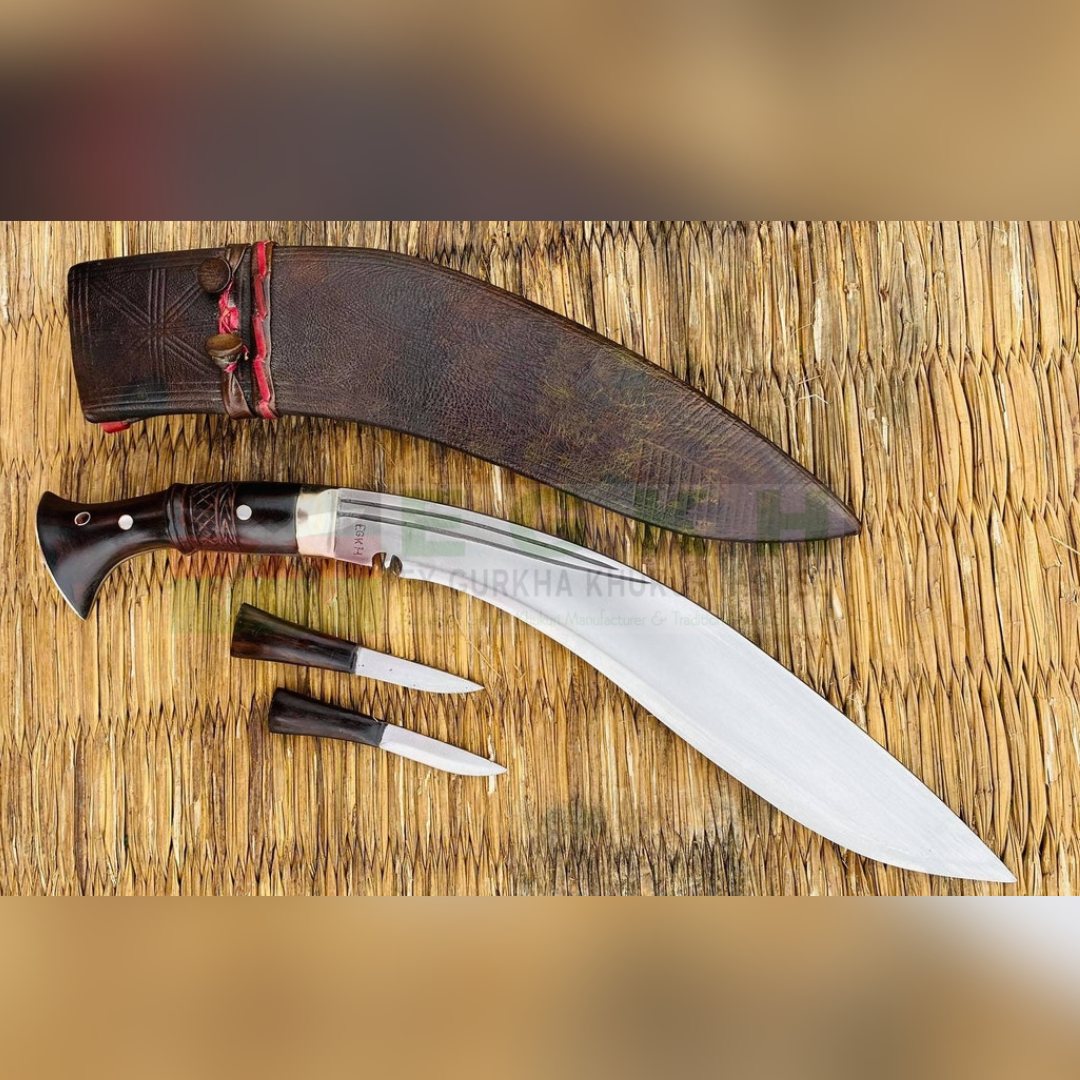
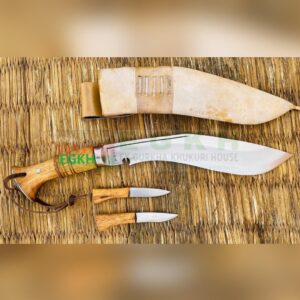
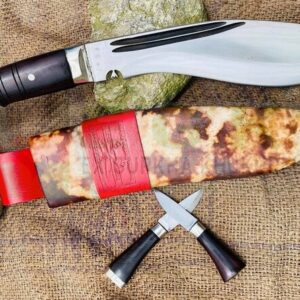
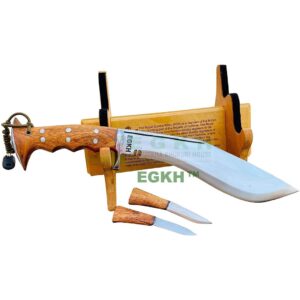
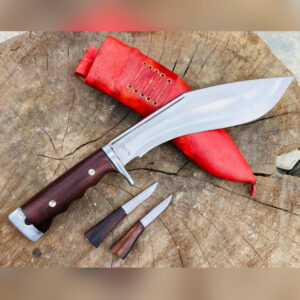
Reviews
There are no reviews yet.